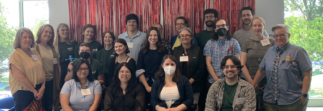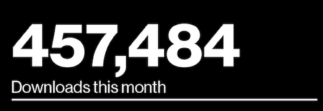 Tina Pappas joined the MIT Libraries as head of Discovery and Engagement Platforms in August 2021. In this role, Pappas oversees the tools and systems that provide access to our digital content for the MIT community and a global community of scholars. She recently spoke with Bibliotech about learning from the pandemic and empathizing with users for more inclusive design.
Tina Pappas joined the MIT Libraries as head of Discovery and Engagement Platforms in August 2021. In this role, Pappas oversees the tools and systems that provide access to our digital content for the MIT community and a global community of scholars. She recently spoke with Bibliotech about learning from the pandemic and empathizing with users for more inclusive design.
Q: In this role, you’ll be leading the strategy for MIT Libraries’ “discovery ecosystem.” What does that include?
A: In my role, the discovery ecosystem is effectively the digital service point for the Libraries. It encompasses a person’s experience from the moment they engage us on the web until they’ve obtained the information they need. It includes the platforms, tools, interfaces and data that comprise a user’s experience in interacting with our services and collections.
Q: What do you find compelling about the MIT Libraries’ vision?
A: The most compelling part of the vision is the work we are doing every day to support it. Since arriving at the Libraries, I have remained impressed with how consistently we root our decisions and initiatives in the principles of MIT Libraries’ Vision: A New Urgency. Our vision requires change, adaptability, and innovative thinking, the very same direction that the Covid-19 pandemic pushed the world towards. This unprecedented global event has further prepared us to meet and overcome the challenges involved in putting compelling ideas into practice. I am particularly excited to explore how we can leverage what we’ve learned through the pandemic to design and deploy services, processes, and experiences that are more equitable and inclusive.
Q: You’ve described your work as “designing digital user experiences rooted in compassion, empathy, and allyship.” Can you talk about what that means in the context of the Libraries?
A: My philosophy about user experience design connects strongly with our New Urgency principle: “We will create an environment to advance, support, and sustain equity, diversity, inclusivity, accessibility, and social justice initiatives through our work and within our organization.” A key aspect to my approach is broadening our view of users by considering them as intersectional consumers of our services. A person’s lived experiences, knowledge, and sometimes social identity characteristics can play a role in how they engage with, interpret, and perceive our digital touchpoints. If we can empathize with users on multiple levels, we can more concretely design experiences that are inclusive.
I like to frame inclusive design work using bell hooks’ feminist theory concept of a center and margin, where the center benefit from inclusion and the margin are left out. We all have multiple aspects of our identity, some that fall within a center and some within a margin. If we lead with compassion, we are better positioned to design for the margin and thereby create experiences that are more accommodating. Consider examples we see every day: left-handed folks living in a predominantly right-handed world or people with color vision deficiency (CVD) navigating color palettes optimized for people without CVD. How might we innovate if we made a habit of challenging our own worldviews when designing for inclusion?
Q: What’s a project your team is working on that you’re excited about?
A: We are incredibly excited about launching our discovery program. This will entail a number of cross-departmental teams working together to develop a data-informed discovery strategy for the Libraries. We’ll be focusing on how we can best meet the needs of our patrons through our digital touchpoints. In the near future, my team in particular will be doing user experience research, convening ideation sessions for technical design, and developing a roadmap to support the forthcoming strategic plan.


